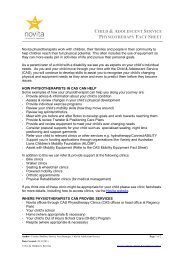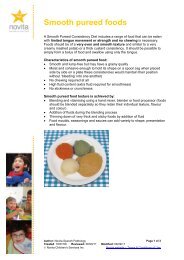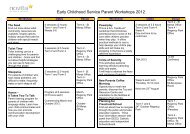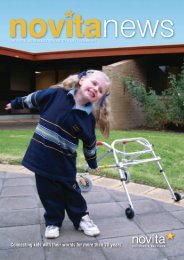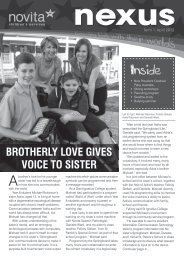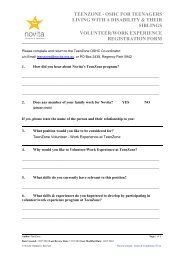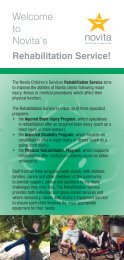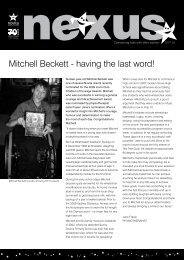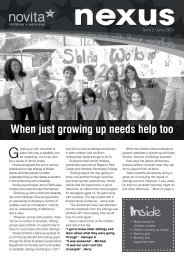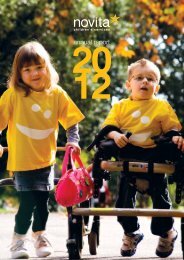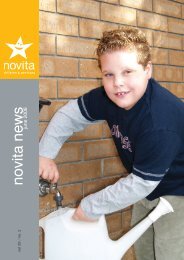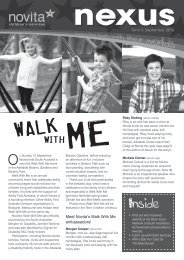Novita Research Report - 2004 to 2007 - Novita Children's Services
Novita Research Report - 2004 to 2007 - Novita Children's Services
Novita Research Report - 2004 to 2007 - Novita Children's Services
- No tags were found...
Create successful ePaper yourself
Turn your PDF publications into a flip-book with our unique Google optimized e-Paper software.
72Project summariesProducts and technology for culture, recreation and sportProject titleContribu<strong>to</strong>rsFundingSummaryThe Virtual Music Instrument – usability trials, program enhancements andcommercialisationDr Tom Chau (Bloorview Kids Rehab and University of Toron<strong>to</strong>), Eric Wan (University ofToron<strong>to</strong>), David Hobbs• Lions Club of Charles SturtThe Virtual Music Instrument (VMI) is an innovative computer program that converts bodymovements in<strong>to</strong> music. By using a webcam in combination with a lap<strong>to</strong>p computer, the VMIuses gesture recognition <strong>to</strong> provide a way for children <strong>to</strong> be able <strong>to</strong> play music without having<strong>to</strong> hold or manipulate an instrument. The user instead plays music by moving in the spacearound them, which has a series of pre-defined ‘hot spots’ in the form of coloured shapesprojected around them and shown on a screen. The system is sensitive enough <strong>to</strong> generatemusical sounds from very small movements, such as finger movements, <strong>to</strong> very large ones,such as waving arms. The VMI is simple <strong>to</strong> use and is aimed at encouraging people withlimited movement <strong>to</strong> interact with their environment and <strong>to</strong> have an impact on it by playingmusic.Dr Tom Chau’s team at Bloorview Kids Rehab developed the VMI program. DavidHobbs identified the program in 2003 during his Churchill Fellowship research as thebest application of technology within the rehabilitation engineering and disability field and<strong>Novita</strong>Tech was the first centre outside of Toron<strong>to</strong> <strong>to</strong> trial the program with people with adisability.MethodIn <strong>2004</strong> <strong>Novita</strong>Tech received the first beta version of the program, known at the time as theMovement <strong>to</strong> Music system. Since then, activity has occurred on two fronts – VMI usabilitytrials (aimed at collecting feedback and suggested improvement for the program) and VMIresearch (<strong>to</strong> quantify the benefits VMI offers people with a disability).The ability <strong>to</strong> conduct usability trials around metropolitan Adelaide received a significantboost through a donation from the Lions Club of Charles Sturt, which purchased thenecessary equipment <strong>to</strong> form a mobile VMI Kit. This meant the program could bedemonstrated on-site at special schools around Adelaide. Each year all feedback, commentsand suggestions received are forwarded <strong>to</strong> the team in Toron<strong>to</strong> <strong>to</strong> refine and improve theproduct.VMI research activity is currently pending a successful external grant application.




